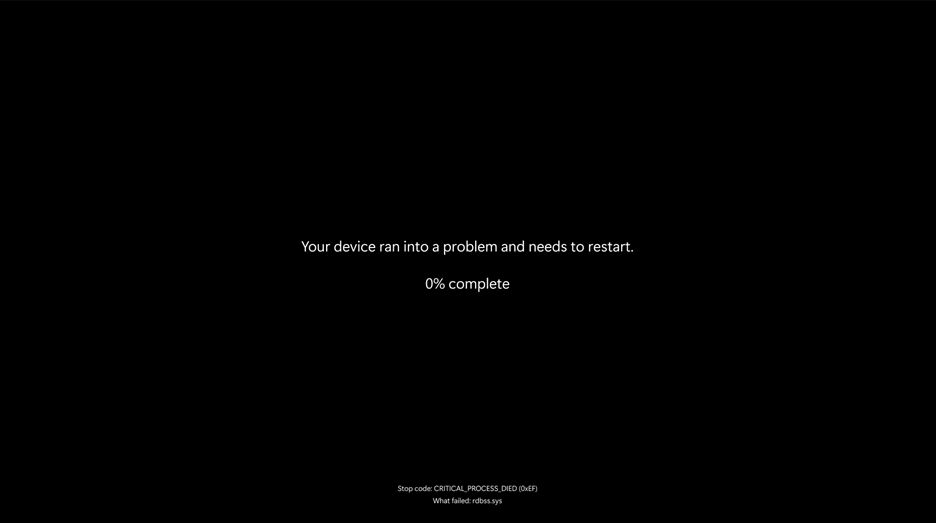Microsoft is rolling out significant changes to Windows 11 24H2 as part of the Windows Resilience Initiative, designed to reduce downtime and help devices recover from serious failures, as well as an overhaul of the all-too-familiar BSOD crash screens.
Microsoft’s Windows Resiliency Initiative is a new effort by Microsoft to make Windows more stable, self-healing, and faster to recover from critical failures. This initiative is in direct response to recent incidents that caused widespread disruptions and crashes due to flawed updates, like the global CrowdStrike driver outage.
Microsoft has now announced that it has replaced the Windows Blue Screen of Death with a new Black Screen of Death, featuring a revamped interface.
“The new UI is simpler, and more aligned with Windows 11’s design language,” explains Microsoft.
“It removes the frowny face and QR code, and instead presents a short, readable message with the stop code and faulty driver information. We’ve also added a hex version of the stop code to make it easier to search for help – a common user request.”

Source: Microsoft
Microsoft also announced the new Quick Machine Recovery feature, which aims to resolve boot failures without requiring manual intervention.
When a system is unable to boot and enters the Windows Recovery Environment (WinRE), it can now automatically connect to a network, check for applicable fixes from Windows Update, and apply them if available.
This new feature can be used to automatically disable known faulty drivers or remove software that is preventing Windows from starting, all without human intervention and with a fix pushed from Microsoft’s servers.
“Once enabled, the feature activates during critical boot failures,” explains Microsoft.
“It uses the secure and connected Windows recovery environment to scan Windows Update for applicable fixes published by Microsoft. If a matching remediation for a widespread issue is available, it is applied automatically, restoring the device without requiring manual intervention.”

Source: Microsoft
This feature aims to prevent massive Windows outages, such as the one we saw when CrowdStrike pushed out a faulty driver that crashed over 8.5 million Windows devices and could only be fixed with manual intervention.
This new feature is available in Windows 11 Home, Pro, Education, and Enterprise editions starting with the 24H2 update build 26100.4770 after installing the KB5062660 update, released today.
Quick Machine Recovery is enabled by default on Home devices and can be manually configured or disabled by IT admins on managed devices using Intune, ReAgentC.exe, or other supported policy tools.
Microsoft says it will further enhance the tool in the future by including advanced IT admin tools for remediation management, monitoring, additional policy and rollout controls.
As part of the Windows Resiliency Initiative, Microsoft is also working with antivirus and EDR vendors to move their drivers outside of the Windows Kernel to prevent crashes from faulty drivers.
Microsoft is currently testing this new Windows endpoint security platform with a set of partners.

CISOs know that getting board buy-in starts with a clear, strategic view of how cloud security drives business value.
This free, editable board report deck helps security leaders present risk, impact, and priorities in clear business terms. Turn security updates into meaningful conversations and faster decision-making in the boardroom.
